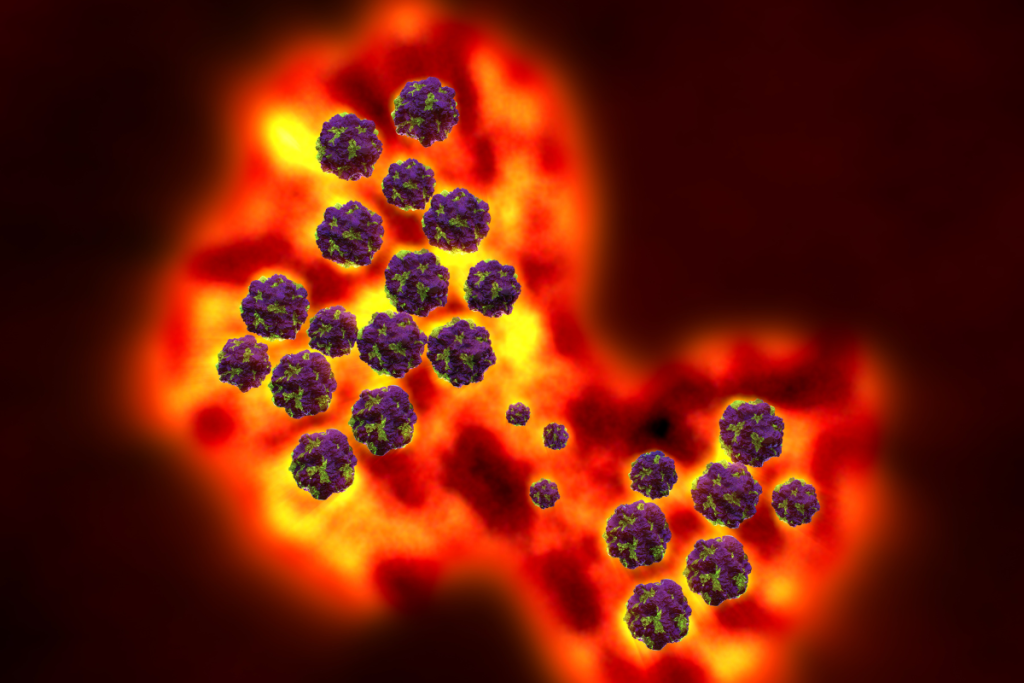
As reported by the CDC United States, the human norovirus is responsible for one million childhood hospital care visit cases every year. One in every 160 children are hospitalized who are below the age of 5 years. One in every 40 children visits the emergency department, and one in every 110,000 patients face death from norovirus. Approximately 2,500 norovirus outbreaks are reported yearly in the United States.
Acute gastroenteritis (AGE) has various causes, and of them, norovirus is the most prevalent, affecting around 685 million people every year. Worldwide data suggests that an estimated 1.5 million deaths are reported annually, out of which 136,000 to 278,000 are reported due to human norovirus infection. Elderly, immunocompromised, and even infants have higher risks of developing severe norovirus disease and possibilities of further complications. The recent World Health report estimates that 685 million diarrheal cases in all age groups are caused by norovirus annually, with children under five years of age contributing about 200 million cases and 50,000 diarrheal morbidity and deaths respectively.
Many of these outbreaks happen in food establishments such as restaurants. Food workers are common sources of foodborne outbreaks in food establishments and spread the infection through handling ready-to-eat foods with unwashed hands such as fruits and vegetables. Outbreaks occur from food that has been contaminated at its source or on the farm. This can be oysters harvested out of polluted water, or fruit and vegetables that were sprayed with polluted water in the field, for example.
Consequences of the outbreaks to hospitals may be in terms of costs and these depend on the units affected. The outbreak occurs mostly during the colder part of the year that is from November to April and May to September in the northern and southern hemispheres. But in countries around the equator, the seasonality is not too evident in the incidence of human norovirus illness.
Noroviruses are genetically diverse groups of emerging RNA viruses that have become even more prevalent in humans through point mutations and genome recombination. At present, ten genogroups (GI–GX) with 60 different P-types and 49 capsid genotypes have been described in association with human and animal infection globally. The differential antibody recognition pattern indicates that the norovirus may be mutating either by enhancing its antibody binding or by decreasing it to avoid detection by the immune system and thus avoid being neutralized by herd immunity.
Norovirus is primarily spread through the fecal-oral route, and only a small number of viral particles are required to cause infection. As a result, outbreaks of norovirus are difficult to control once they occur. These viruses are highly contagious, and the rapid spread of most viral outbreaks can be attributed to the low infectious dose, which ranges from 18 to 1,000 viral particles. Outbreaks in environments such as long-term care facilities, daycares, and hospitals tend to have high attack rates and are often linked to significant costs and disease burden.
A one-year surveillance study of gastroenteritis outbreaks across three hospitals in England found that during hospital outbreaks, the attack rate for confirmed norovirus AGE was 24.5% (95% CI: 17.8–31.2) among staff and 53.2% (95% CI: 41.5–65.0) among patients. To control outbreaks in healthcare settings, guidelines include enhanced hand hygiene, environmental cleaning, restricting patient movements, and excluding ill staff from work.
Norovirus vaccines are currently in development but, to date, there are no FDA-approved vaccines against noroviruses. As a major cause of morbidity and mortality, norovirus AGE represents a significant burden and economic well-being, the development of a vaccine to prevent morbidity and mortality as well as the protection of at-risk populations could have a huge impact on global public health.
Therefore, the candidate vaccines must be effective at all ages, including younger children who carry the bulk of the diarrheic burden. Future norovirus research must define well, early, and importantly, the ability of currently available vaccines to protect against heterologous norovirus strains and antigenic variants that frequently emerge to cause outbreaks. Identifying an appropriate immunological marker of protection against norovirus, developing more permissive cell lines for viral culture, and creating in vivo infection models that fully replicate human disease could help achieve these goals.
References:
- Omatola CA, Mshelbwala PP, Okolo MO, et al. Noroviruses: Evolutionary Dynamics, Epidemiology, Pathogenesis, and Vaccine Advances-A Comprehensive Review. Vaccines (Basel). 2024;12(6):590. doi:10.3390/vaccines12060590
- Centers for Disease Control and Prevention (CDC). Norovirus Outbreaks. 2024. https://www.cdc.gov/norovirus/outbreak-basics/index.html
- Carlson KB, Dilley A, O’Grady T, Johnson JA, Lopman B, Viscidi E. A narrative review of norovirus epidemiology, biology, and challenges to vaccine development. NPJ Vaccines. 2024;9(1):94. doi:10.1038/s41541-024-00884-2











